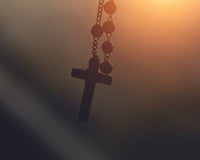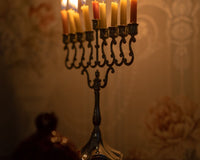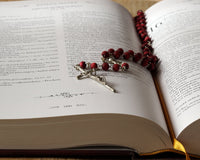The Menorah has seven branches, which represent the six days of creation and the seventh day of rest in the biblical account of Genesis. It is made of gold or silver and is often decorated with intricate designs and symbols that are meaningful to the Jewish faith.
The Menorah has been a symbol of the Jewish faith since ancient times, and it was used in the Temple in Jerusalem as a source of light. When the Temple was destroyed in 70 CE, the Menorah became an even more important symbol of the Jewish people and their faith. Today, the Menorah is still an important symbol of the Jewish faith and is often used in religious services and ceremonies, as well as in homes and other settings.
Importance of Menorah
The Menorah is an important symbol in Jewish culture and religion, with a rich history and significance that dates back thousands of years. Here are some of the key reasons why the Menorah is important:
Symbol of Jewish identity: The Menorah is a powerful symbol of Jewish identity and is often used to represent the Jewish people and their faith. It is a reminder of the long history and enduring spirit of the Jewish people, and it serves as a source of pride and inspiration.
Celebration of Hanukkah: The Menorah is most commonly associated with the Jewish holiday of Hanukkah, which celebrates the victory of the Maccabees over the Greek army and the rededication of the Temple in Jerusalem. During Hanukkah, the Menorah is lit each night to commemorate the miracle of the oil that burned for eight days.
Reminder of Jewish history: The Menorah serves as a powerful reminder of Jewish history, both ancient and modern. It is a symbol of the resilience and perseverance of the Jewish people, as well as a reminder of the tragedies and triumphs that have shaped Jewish history.
Religious significance: The Menorah has religious significance in Judaism as a source of light, symbolizing the light of God's presence in the world. It is also associated with the Temple in Jerusalem, where it was used as a source of light and as a symbol of God's presence.
Overall, the Menorah is an important symbol of Jewish culture and religion, with deep historical and religious significance. It serves as a reminder of Jewish identity, history, and faith, and is a powerful source of inspiration and pride for the Jewish people.
History of Menorah
The history of the Menorah dates back thousands of years to the time of the ancient Israelites. According to the biblical account in Exodus, God commanded Moses to make a seven-branched candelabrum for use in the Tabernacle, the portable sanctuary that accompanied the Israelites during their journey through the wilderness. The Menorah was to be made of pure gold and decorated with almond blossoms, buds, and flowers.
The Menorah continued to be used in the Temple in Jerusalem, which was built by King Solomon in the 10th century BCE. It was placed in the Temple's inner sanctuary, the Holy of Holies, and was used as a source of light. Over time, the Menorah became an important symbol of the Jewish people and their faith, representing the light of God's presence in the world.
In 167 BCE, the Temple was desecrated by the Greek ruler Antiochus IV, and the Menorah was stolen and taken to Greece. When the Maccabees, a Jewish rebel group, successfully defeated the Greek army and rededicated the Temple in 164 BCE, they found only enough oil to light the Menorah for one day. However, the oil miraculously burned for eight days, and this event is commemorated each year during the holiday of Hanukkah.
After the destruction of the Temple by the Romans in 70 CE, the Menorah became an even more important symbol of the Jewish people and their faith. It appears on Jewish coins and seals from this period and is mentioned in many Jewish texts and prayers.
Today, the Menorah remains an important symbol of the Jewish faith and is often used in religious services and ceremonies. It is also an important cultural symbol for the Jewish people, representing their history, identity, and enduring spirit.
Uses of Menorah
The Menorah is used in a variety of settings, both religious and cultural, to symbolize Jewish identity and faith. Here are some of the main uses of the Menorah:
Hanukkah: The Menorah is most commonly used during the Jewish holiday of Hanukkah, which commemorates the rededication of the Temple in Jerusalem and the miracle of the oil that burned for eight days. During Hanukkah, a special Hanukkah Menorah called Hanukkiah is used, which has eight branches and a ninth branch, called the shamash, used to light the other candles.
Synagogues: The Menorah is often displayed in synagogues as a symbol of the Temple and the Jewish people's connection to God. It is sometimes placed in the sanctuary, near the ark that holds the Torah scrolls, or in a prominent location in the synagogue.
Homes: Many Jewish families have a Menorah in their home, which they use during Hanukkah to light the candles and celebrate the holiday. The Menorah is often placed in a window or another prominent location in the home.
Cultural events: The Menorah is also used in cultural events, such as Jewish festivals, concerts, and other public gatherings. It is a powerful symbol of Jewish identity and culture and is often used to promote awareness and understanding of Jewish traditions and values.
Overall, the Menorah is a versatile and powerful symbol that is used in a variety of settings to represent Jewish identity and faith. Whether used in the home, synagogue, or public sphere, the Menorah serves as a reminder of Jewish history, culture, and enduring spirit.
Shop our full collection of Menorahs and Hanukkiahs here.





